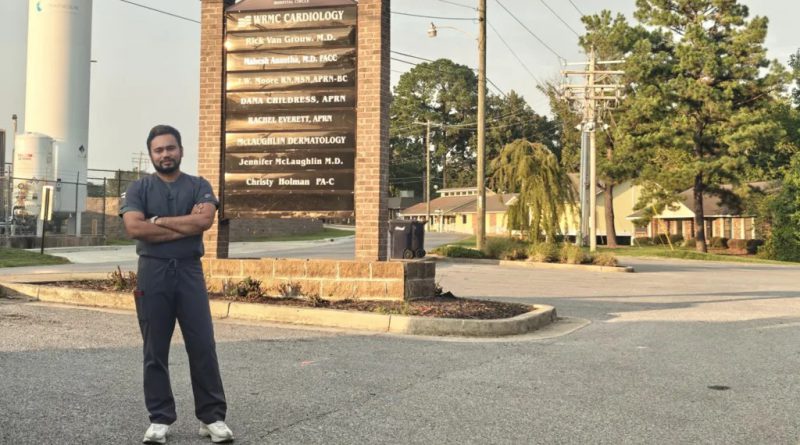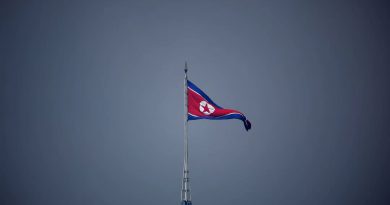Indian Doctors Keep Rural America’s Heart Beating as Visa Policy Debate Unfolds
He believes policymakers understand that international doctors are not replacing U.S. graduates — they are filling essential gaps.
In the peaceful town of Batesville, Arkansas, Dr. Mahesh Anantha begins his rounds. As one of the few interventional cardiologists serving thousands of people spread across rural counties, his role is nothing short of life-saving.
“There’s no other medical facility nearby for over an hour’s drive,” he says. “So people depend on us completely.” For residents of this small farming community, Dr. Anantha is not just a doctor — he’s the difference between life and loss.
His story mirrors that of thousands of Indian-origin physicians working quietly across America’s rural heartlands. They are the backbone of healthcare in small towns, providing expertise, compassion, and hope in places where hospitals struggle to find local doctors.
Nearly one in four physicians practicing in the United States received their medical education abroad. Among them, Indian-trained doctors form the largest group, filling critical roles in underserved areas that American graduates often avoid.
When news emerged that the U.S. government might raise H-1B visa fees for skilled workers, concerns rippled through this community. Many feared the move could make it harder for hospitals to recruit and retain international doctors.
However, officials later clarified that existing visa holders would not be affected, offering relief to thousands of physicians already working across America. The administration also hinted that exemptions could be made for sectors vital to the national interest — including healthcare.
This brought renewed optimism among the roughly 50,000 Indian-trained doctors currently serving in the U.S. Many have spent decades building communities, mentoring young physicians, and transforming struggling hospitals into thriving medical hubs.
Dr. Bobby Mukkamala, president of the American Medical Association (AMA) and the first Indian-origin physician to lead it, remains hopeful. He believes policymakers understand that international doctors are not replacing U.S. graduates — they are filling essential gaps.
“These doctors are serving where others won’t,” he says. “They are vital to the nation’s health infrastructure, especially in rural America.”
His comments echo a growing consensus that foreign-trained professionals are key to addressing the country’s looming doctor shortage.
According to the AMA, the United States could face a shortfall of 124,000 doctors by 2034. Immigrant physicians, particularly from India, have long been the solution to this crisis — not the cause.
One such doctor is Rakesh Kanipakam, a nephrologist from Andhra Pradesh, India. He drives hundreds of miles each week through southern Alabama to treat patients suffering from kidney failure.
“We serve multiple clinics and dialysis centers across a 100-mile radius,” he says. “Without us, many patients would simply have no care.”
These doctors are part of a larger system sustained by global cooperation and humanitarian commitment.
The Conrad Waiver program, established in 1990, allows foreign doctors to stay in the U.S. if they serve in Health Professional Shortage Areas. This initiative has brought essential care to rural counties that otherwise would have none.
In many of these areas, hospitals depend entirely on international doctors to stay open. Without them, emergency rooms would close, and chronic illness management would collapse.
Beyond healthcare, the contributions of immigrant physicians extend deep into the American economy. Their presence boosts hospital revenues, supports local jobs, and brings medical excellence to underserved populations.
In Batesville, Dr. Anantha’s leadership helped transform his hospital into a regional center of excellence. The facility now brings in millions annually, supports dozens of jobs, and delivers advanced cardiac care to thousands.
Medical leaders say such examples show how global talent strengthens—not threatens—the U.S. healthcare system. Research from the University of California, San Diego, confirms that international doctors do not displace American physicians; instead, they expand access where it’s most needed.
As visa discussions continue, both the medical community and policymakers are exploring ways to balance regulation with compassion. There is growing recognition that healthcare is a shared global responsibility that transcends borders.
Dr. Satheesh Kathula, president of the American Association of Physicians of Indian Origin, says these doctors are “the invisible lifelines of America’s healthcare.” He adds, “They’ve worked through pandemics and crises, often sacrificing personal comfort for the well-being of their patients.”
From New York and Michigan to Alabama and Arkansas, their dedication runs deep. They serve not for prestige or pay, but out of a calling — one rooted in empathy, discipline, and the belief that every life matters.
Their work is reshaping how America views immigration and medicine. It highlights the power of international collaboration and the importance of welcoming skilled professionals who dedicate their lives to healing others.
For now, Indian-origin doctors continue to serve on the frontlines of rural healthcare, bridging continents with compassion. They are living proof that when nations work together, even the most remote communities can receive world-class care.
As Dr. Mukkamala puts it, “These doctors are not just immigrants — they are America’s doctors, too.” Their presence reminds the world that medicine knows no borders, and humanity’s health is best protected when nations stand united.



